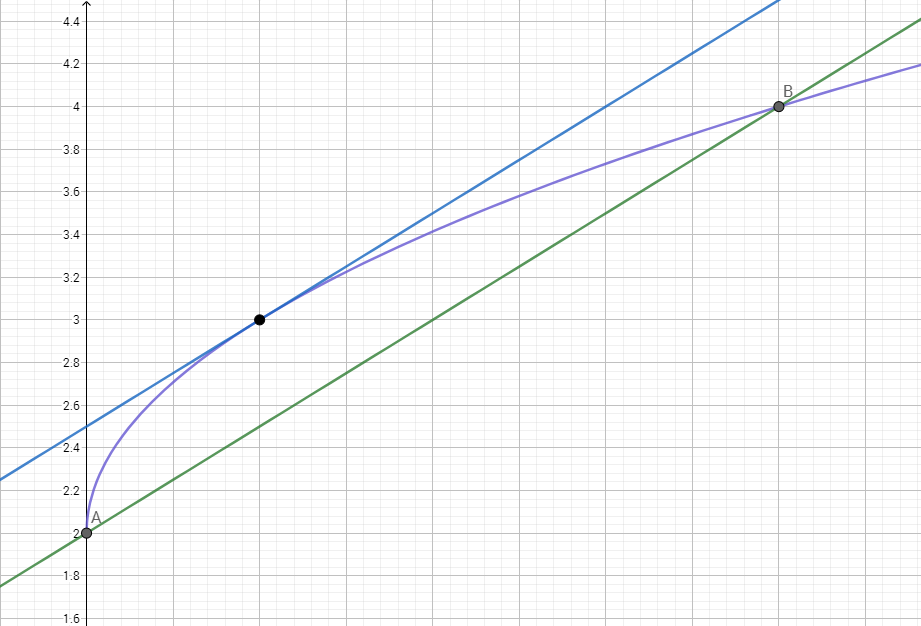Question #82b04
1 Answer
Explanation:
I'm not sure if you meant
The Mean Value Theorem (MVT) basically says if a function
Think of this in the following manner: Put a dot at the point
Here's an analogy with common terms. You are throwing a frisbee through the air to a friend of yours who is standing on a hillside that's up above you. No matter which way you throw your frisbee up or down, if you throw it and your friend catches it, at some point the frisbee had to be going in the same direction as a straight line between you and your friend.
It might start out going much steeper, but eventually gravity will take over and the frisbee will begin to level out, and eventually start flying more downwards. Sometime through that path, though, the direction through the air will be parallel to that straight line.
For this problem, first find
Now, let's find the slope of the line between
Lastly, the MVT says there has to be some

